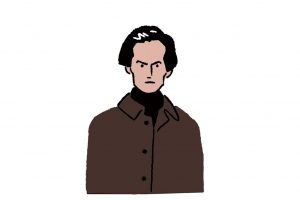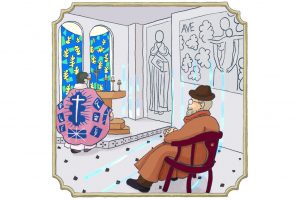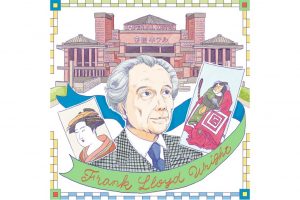Among a number of Kawabata’s portrait photographs, his large eyes have impressed viewers through the decades. The eyes project strong light and have spawned various legends. One is about a young female editor who started crying when she first met Kawabata because she felt a strong coercive force from his eyes. Another famous story is that a thief sneaked into Kawabata’s house at night and found himself eye to eye with the occupant. Then, the thief asked Kawabata, “Is this not okay?” and fled. Another is about maiko apprentice geiko girls in Kyoto. Kawabata invited more than 10 of them to a teahouse in Kyoto’s Gion. He had them sit in line in a tatami room and said nothing but just viewed them carefully. After 2 or 3 hours, he just said, “Thank you for the good job” and smiled. Kawabata’s “eye” contained not only strong pressure but also an acute power of observation.
Yasunari Kawabata (Second Part)
Examining artists
No.007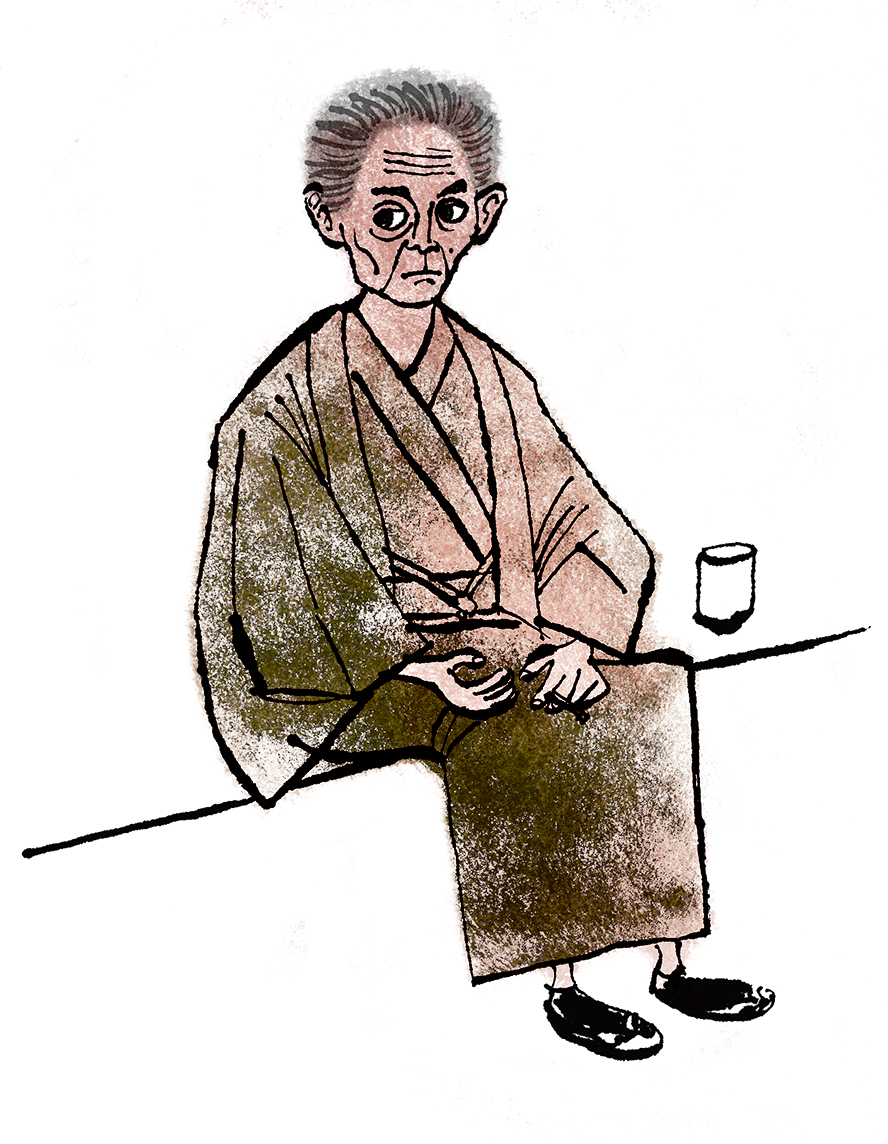
Yasunari Kawabata (1899-1972) was a Japanese novelist who continuously published works in various styles and themes for about 50 years since his major debut in his 20s. He was called a “magician” for his constant quest for new expressions. The contemporary opera based on Kawabata’s “House of the Sleeping Beauties,” a work well-known for its uniqueness, was performed in December 2016 at Tokyo Bunka Kaikan.
Illustration: Sora Toyoshima
Text and editorial design: TAN Editorial Group (Naoko Goda)
Yasunari Kawabata (1899-1972)
Born in Osaka.
A Japanese novelist who depicted Japan’s classical beauty in his sensitive writing. His representative works include “The Dancing Girl of Izu,” “Snow Country,” “The Sound of the Mountain,” “The Old Capital” and “Beauty and Sadness.” He won the Nobel Prize for Literature in 1968, a first for a Japanese author.
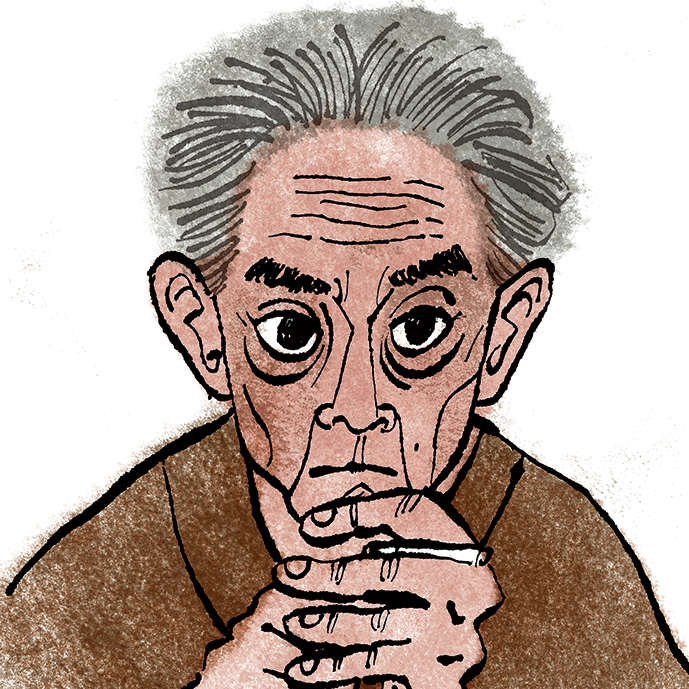
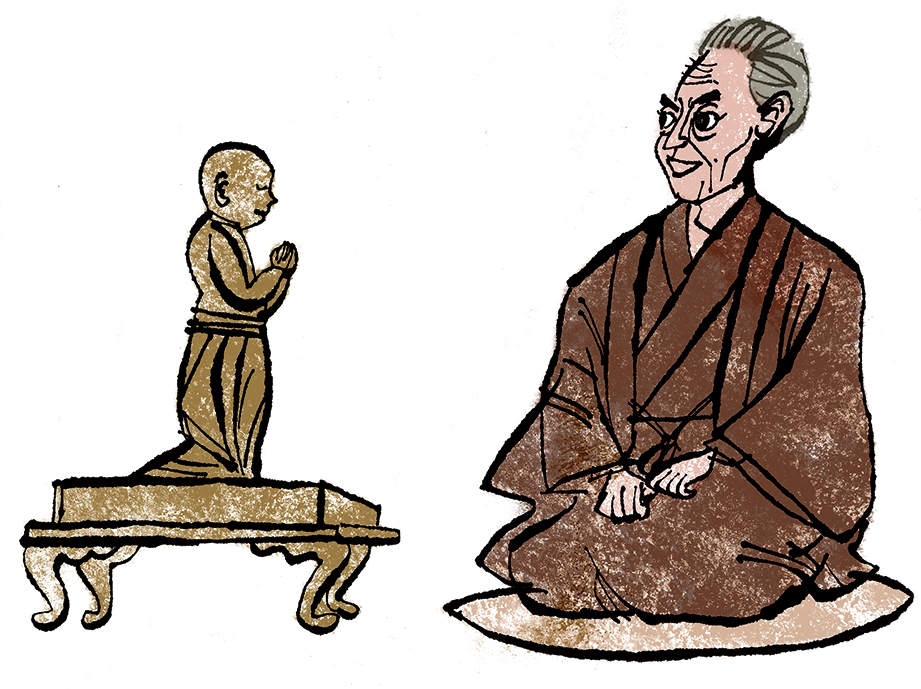
Kawabata loved arts as a whole, not just literature. He also had in-depth knowledge of the arts. He collected Jomon pottery, ancient and medieval Buddhist statues, paintings, sculptures and handicrafts from Japan and abroad, as well as contemporary artworks including pieces by Yayoi Kusama. He often acquired those items after borrowing money or receiving advance payments for his writing. The Kawabata Yasunari Foundation, which manages Kawabata’s personal items and art collection, houses Gyokudo Urakami’s painting entitled “Frozen Clouds, Sifted Snow,” a designated National Treasure, and various other outstanding artworks. On the other hand, Kawabata liked cheap lighters and key holders. He enjoyed purchasing items that appealed to him and would give them away to people.
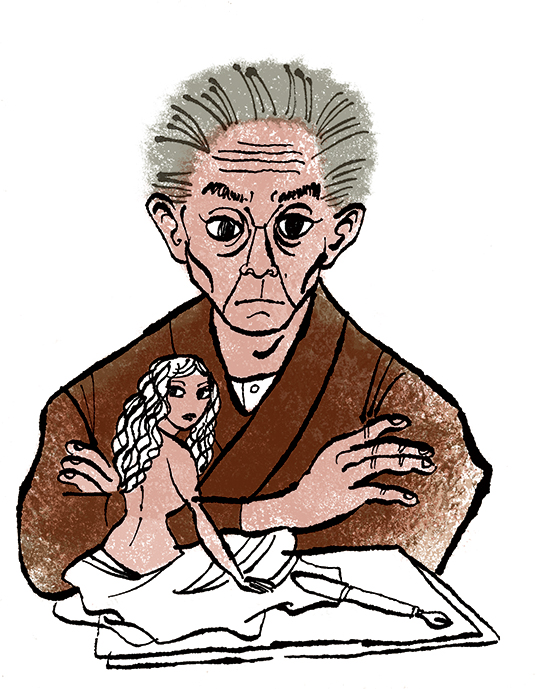
Kawabata’s writing co-existed with lyrical pieces based on traditional Japanese culture, as well as avant-garde and fantastic pieces. Each work in entertainment, girls’ novels and historical novels showed a variety of developments. “House of Sleeping Beauties,” written from when he was 60 to 62, is his representative work with fantasy elements. An old man stays in a strange inn where guests can sleep with girls sleeping with medicine, regaining his past memories. Its surreal setting and mysterious development became a major topic when Kawabata introduced. It also influenced both domestic and foreign novelists. The story continues to attract people, being a masterpieces among Kawabata’s literature.
<End>
Supervised by Kokushokankokai Inc.


